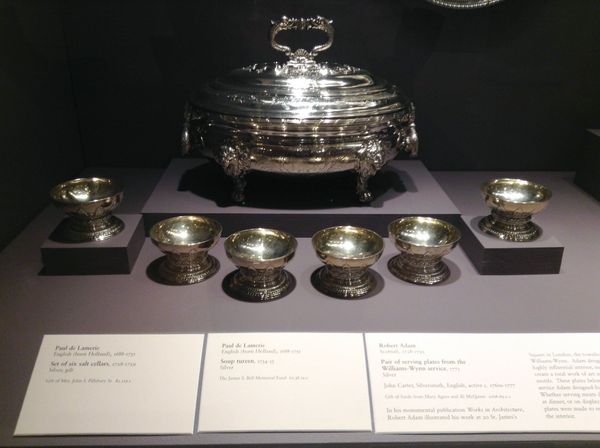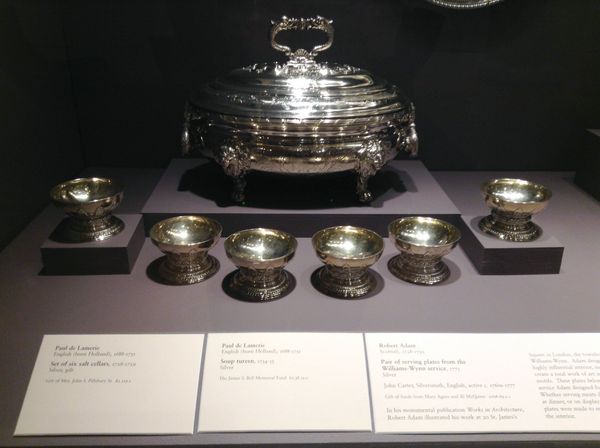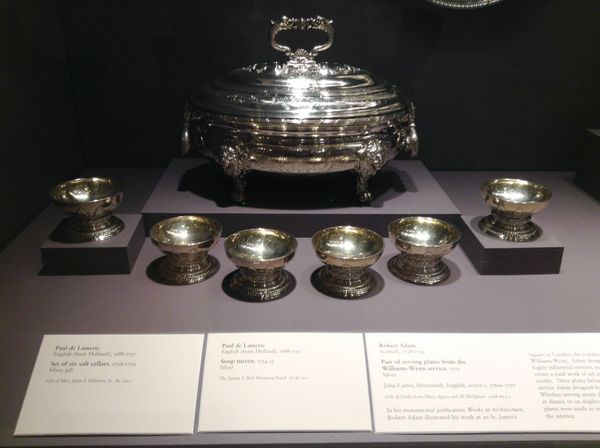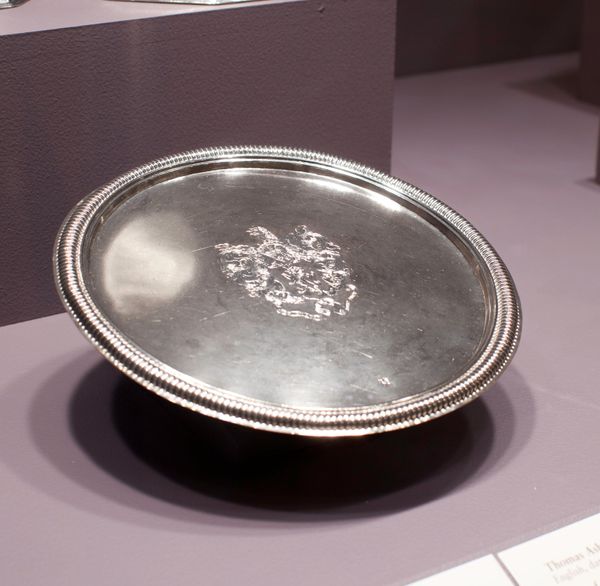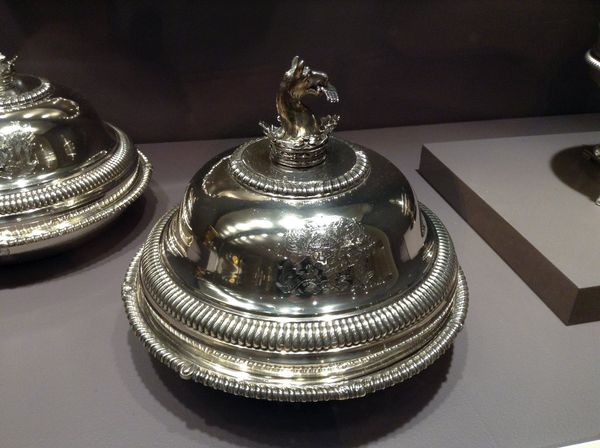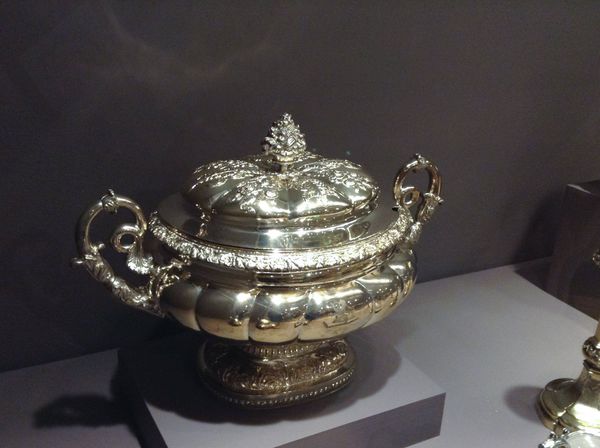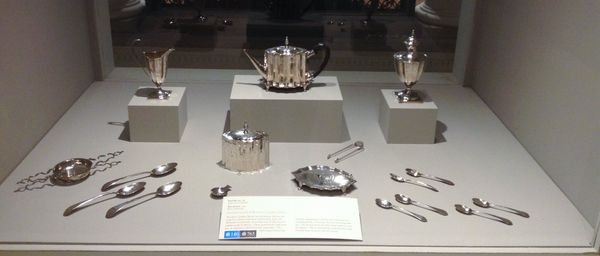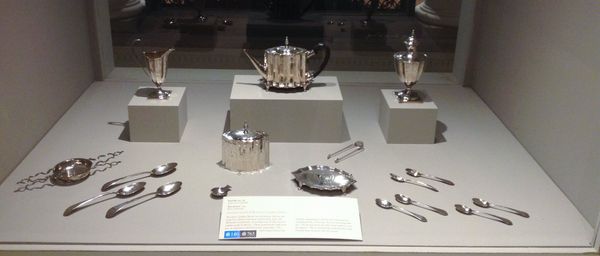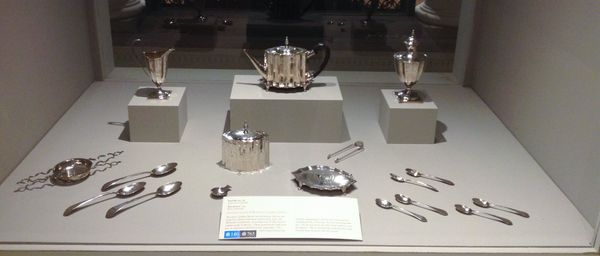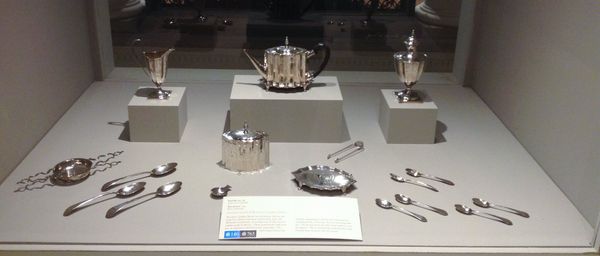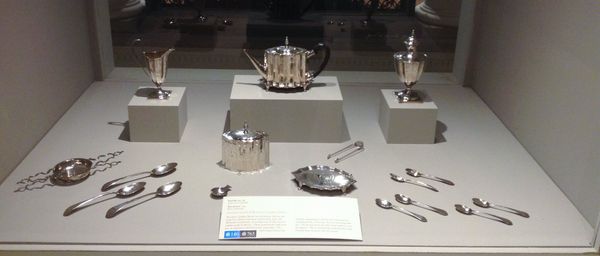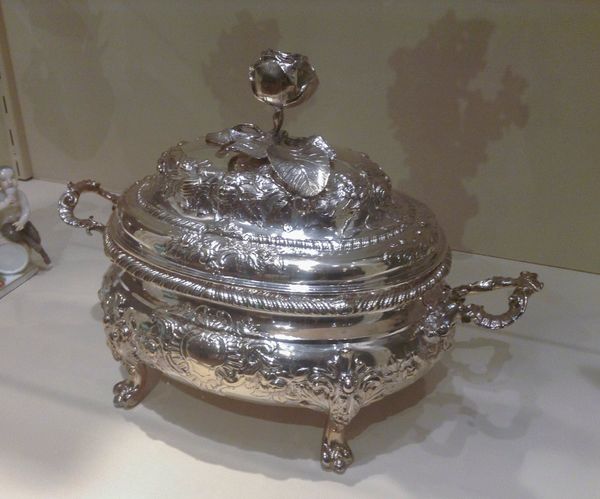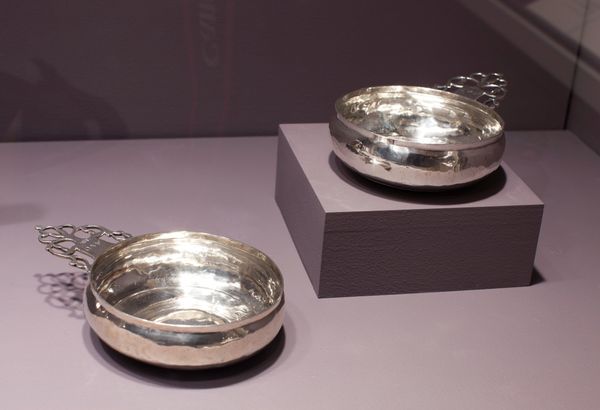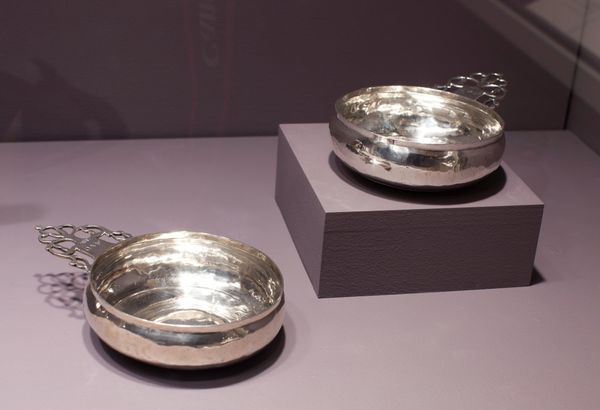
silver, metal, sculpture
#
silver
#
baroque
#
metal
#
sculpture
#
decorative-art
Dimensions: 2 3/16 x 3 1/2 x 3 1/2 in. (5.56 x 8.89 x 8.89 cm)
Copyright: Public Domain
Curator: Looking at this "Set of six salt cellars", fashioned between 1728 and 1729 by Paul de Lamerie, now residing here at the Minneapolis Institute of Art, one immediately notices its opulence. Editor: Yes, my first thought is one of excessive luxury. Silver, and so much of it! These aren't just functional objects; they are declarations of wealth and power, belonging to the baroque period and reflecting a culture of conspicuous consumption. Who were they meant for? Curator: Indeed. As exquisite examples of baroque silverwork, they demonstrate the high level of skill prevalent amongst London's silversmithing workshops at the time. Examining the craftsmanship, consider the labor: the raising, hammering, and chasing. Each element reveals countless hours of meticulous work. The fact these still exist and gleam after centuries is something. Editor: I agree, it’s an intriguing survival. Salt, then as now, seasons our food, but the presentation of this basic necessity is imbued with so much social meaning. Who was sitting at the table where these salt cellars were placed? What conversations were had? What injustices were perpetuated, perhaps, in order to maintain this lifestyle of ornate dining? The visual appeal should not blind us to the social hierarchy in play. Curator: The weight of that silver also implies capital accumulation; it’s not simply material, but frozen resources. Who financed Lamerie, and where did that silver come from? To see that level of patronage materialize itself is compelling. It challenges any separation of 'art' from economics, doesn’t it? Editor: Exactly! We see the glimmer and are awed by the beauty, but we must dig beneath the shiny surface to confront the intertwined issues of class, labor and colonialism embedded within it. Objects like this encourage dialogue that helps broaden our understanding beyond conventional narratives. Curator: Ultimately, this work of applied art demonstrates how deeply intertwined production, social structure and creative making can be. Editor: Precisely, these tiny bowls overflow not just with salt, but stories of a complex past, revealing that even something small can carry a weight of social and historical context.
Comments
No comments
Be the first to comment and join the conversation on the ultimate creative platform.
